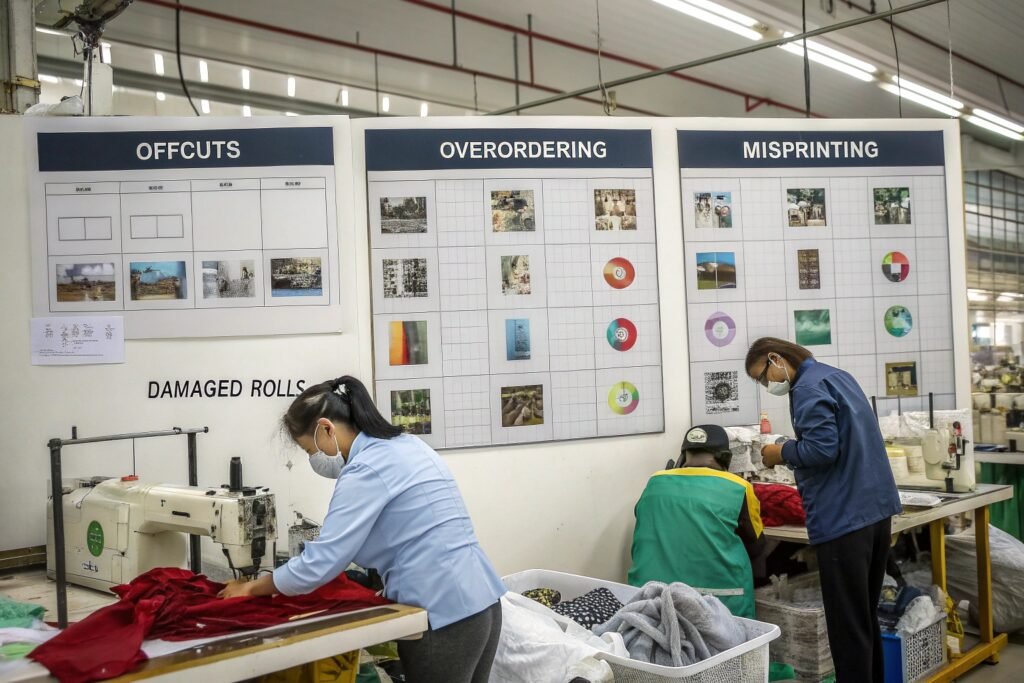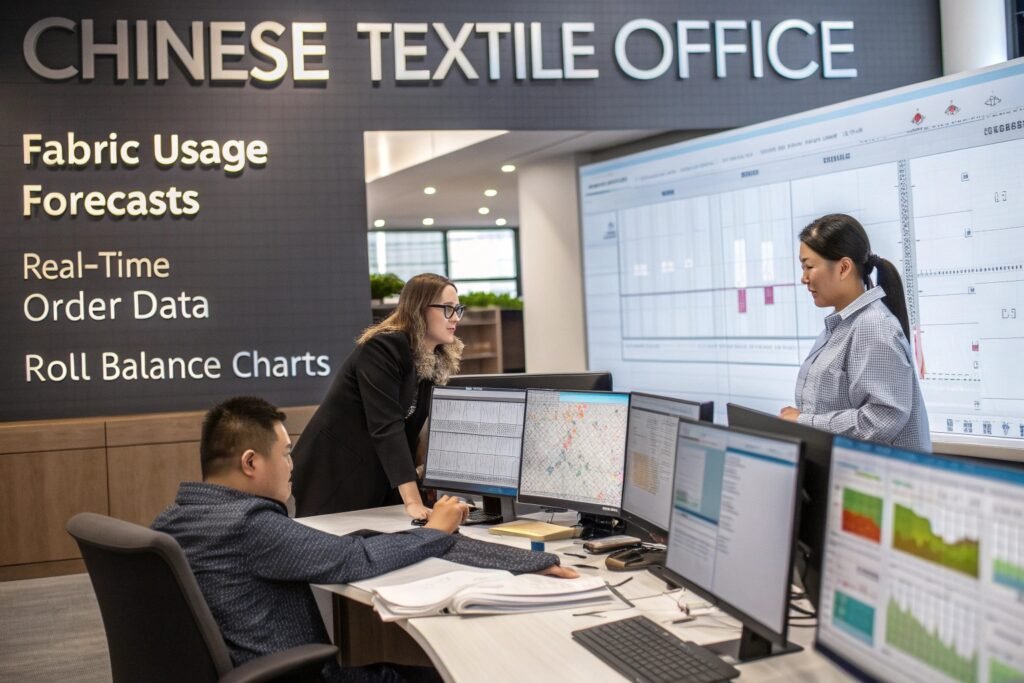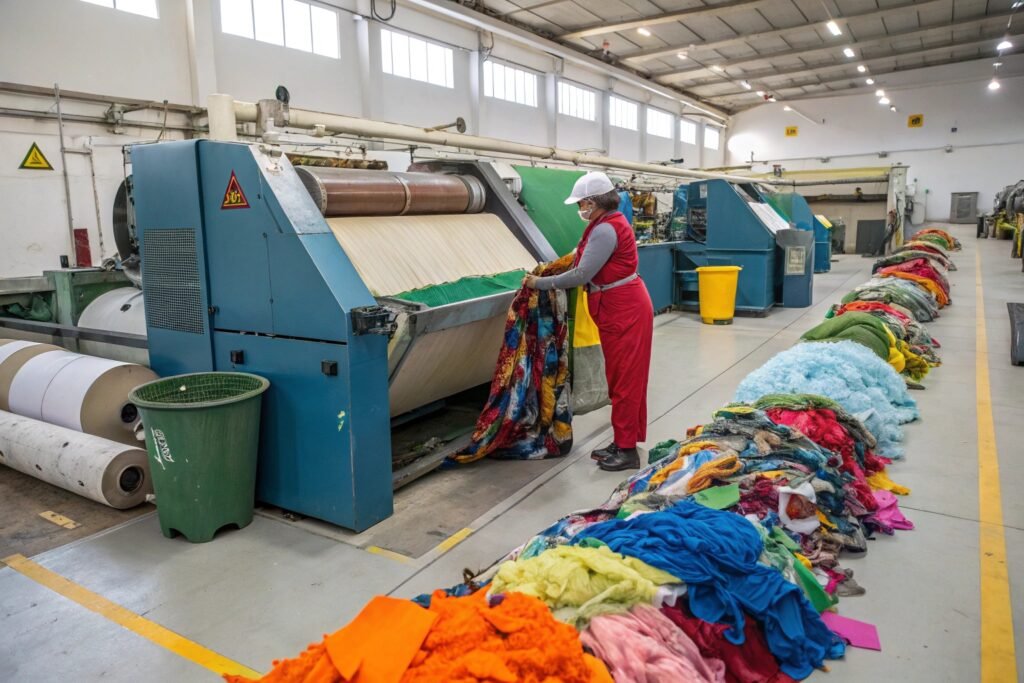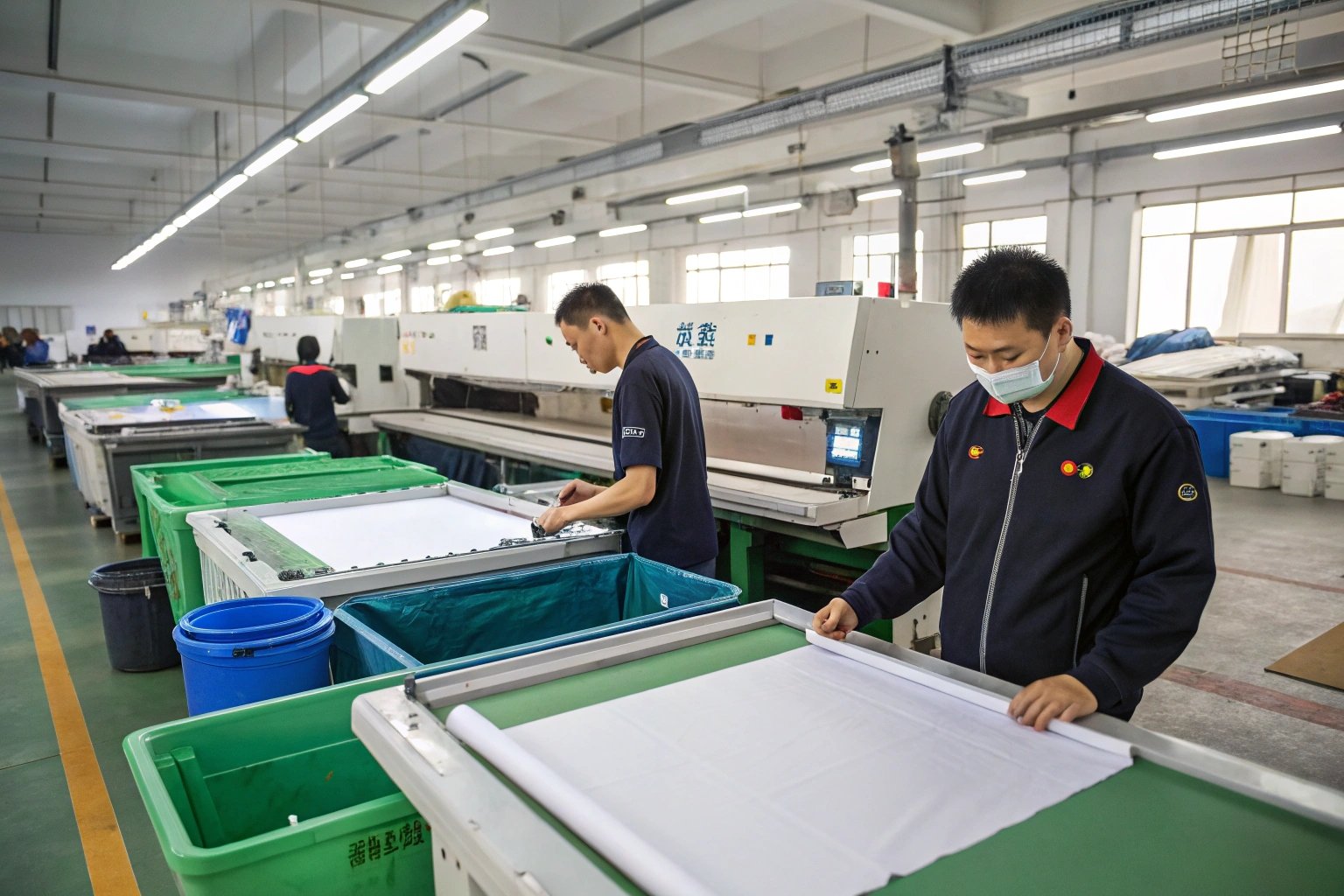Fabric waste is the silent killer of fashion supply chains. Every miscut, overstocked roll, and poor planning decision compounds into lost profits, unsustainable practices, and unhappy buyers.
The key to solving fabric waste isn’t more stock—it’s more control. Brands and sourcing managers who work with integrated, proactive textile partners are the ones turning waste into savings.
At Fumao Fabric, we work with over 100 global clients—from fast fashion to luxury brands—to reduce waste across the entire supply chain. From smart fabric usage planning to technical roll mapping and recycling partnerships, we believe efficiency starts before the first meter is even woven.
What Causes Most Fabric Waste in Apparel Production?
Most brands focus on selling finished garments. But fabric loss happens far earlier—in misjudged yardage plans, design inefficiencies, and supplier communication gaps.
The three main sources of fabric waste are cutting room offcuts, over-ordering due to safety buffers, and production defects like misprints or dye errors.

How Do Cutting Techniques Impact Fabric Efficiency?
Marker efficiency—or how well a pattern layout utilizes a fabric roll—can dramatically change how much material gets thrown away. Brands relying on manual cutting or outdated templates often lose 10–20% of fabric right at the layout stage.
By using digital marker making and CAD-based pattern design, factories can increase yield and reduce excess trims. At Fumao, our cutting partners use AI-optimized layout systems, leading to less than 5% cutting waste on average.
Why Does Overordering Still Happen?
Buyers often inflate their PO quantity to “be safe.” But without real-time supplier data, it’s impossible to predict accurate usage. This leads to excess rolls being stored—or worse, discarded. Implementing just-in-time inventory strategies, especially for basics like cotton poplin or polyester twill, can eliminate unnecessary yardage.
We provide our clients with live inventory visibility, so they only order what’s needed and reduce waste due to overestimation.
How Can Fabric Planning and Forecasting Reduce Waste?
Without proper planning tools, brands often order too much or too little, and those mistakes trickle down into waste. Forecasting isn’t just a finance issue—it’s a sustainability one.
Strategic fabric planning aligns product design, merchandising, and production to prevent overbuying and leftover rolls.

What Tools Improve Fabric Forecast Accuracy?
Excel sheets are no longer enough. Brands need dynamic platforms that integrate sales projections, fabric yields, and past consumption data. Systems like BlueCherry PLM or WFX Cloud allow real-time roll management and smart reordering.
At Fumao, we offer our buyers a digital fabric allocation dashboard linked to their style forecast, allowing them to cut fabric usage by up to 12% per season.
How Does Collaborative Development Help?
Often, designers work in isolation from sourcing. We help brands align their creative vision with practical fabric choices early in the process. For example, if a client wants a structured drape, we recommend twill-backed satin instead of using an interlining—which cuts bulk and waste.
Our sampling team even builds “yardage simulations” so clients can visualize how much of each roll they’ll use per design before final PO submission.
Are There Recyclable or Circular Fabric Solutions?
Recycling post-production waste is no longer optional—it’s becoming a regulatory and consumer expectation. Luckily, more mills are offering circular solutions that repurpose scraps into new textiles.
Brands can now recycle cuttings, selvage waste, and surplus into regenerated yarns for use in future collections.

What Fabrics Are Commonly Recyclable?
- Cotton Waste: Can be re-spun into regenerated cotton yarns.
- Polyester Offcuts: Melted and extruded into recycled PET filament.
- Wool Trim Waste: Carded and reused in blended felts or home textile padding.
At Fumao, we collaborate with recyclers in Shaoxing to collect scraps from our printing and embroidery units. Clients can request recycled input traceability as part of our production reports.
How Can You Track Circular Impact?
We provide QR-coded packaging and batch numbers linked to recycling streams. Through TextileGenesis or internal blockchain ledgers, brands can prove to end buyers that the fabric waste from one season became the yarn for the next.
What Role Does Supplier Communication Play?
Even the most efficient factories can’t reduce waste without clear, proactive communication from the buyer’s side. Every unclear spec or rushed PO increases the chance of errors and excess.
Working closely with suppliers on fabric width, shrinkage tolerance, and print layout improves alignment and reduces wasteful errors.

Why Do Miscommunications Cause Waste?
A missed detail in shrinkage specs can lead to cutting the wrong yardage. A vague color reference may result in rejected dye lots. Each of these scenarios leads to remakes or wasted inventory. That’s why we conduct lab dips and shrinkage testing before production.
Our clients receive video reports, not just PDFs, showing actual drape, colorfastness tests, and dimensional change results before approval.
What Are Best Practices for Smoother Coordination?
- Use tech packs with fabric yield charts
- Confirm roll widths early
- Request mill test certificates
- Provide feedback loops post-sampling
We support clients with preformatted sourcing templates and assign English-speaking merchandisers to each order, ensuring your specs don’t get lost in translation.
Conclusion
Reducing fabric waste in the fashion supply chain isn’t just a sustainability checkbox—it’s a smart sourcing strategy. From cutting room planning to fiber recycling and better forecasting, brands that prioritize efficiency at the fabric level are building leaner, greener, and more profitable supply chains. By working with partners like Fumao who support data-driven decisions, digital tools, and end-to-end visibility, you not only reduce waste—you gain control.










